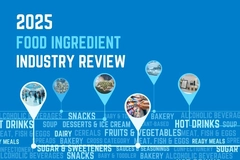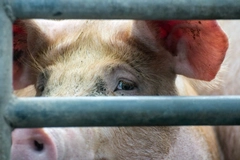
- Industry news
Industry news
- Category news
Category news
- Reports
- Key trends
- Multimedia
- Journal
- Events
- Suppliers
- Home
- Industry news
Industry news
- Category news
Category news
- Reports
- Key trends
- Multimedia
- Events
- Suppliers
Rice rises to spotlight as supply shocks could further disrupt food security

13 Jun 2022 --- As the war in Ukraine continues to destabilize food supplies and markets, rice is now the commodity in sharpened focus as geographies around the world increase production, raise prices, boost farmers’ incomes and grapple to get more bargaining power in global markets.
Farmers and governments are trying to seize opportunities to fill the global food gap as Russia’s invasion shows no signs of abating, continuing to send food security into freefall.
To date, one of the main commodities impacted has been wheat – with millions of metric tons still stuck in Ukraine as Russia blockades ports and prevents the much-needed product from being exported around the world, including to African countries.
However, rice is emerging as the commodity to watch in the coming weeks.

Recently, the UN FAO Rice Price Index marked its fifth successive monthly price increase reaching a 12-month high. Prices of rice are 1.2% lower than one year ago but have surged over 10% this 2022, with the latest data showing a 3.5% increase in May compared to April.
High wheat prices are driving interest in other crops such as rice. Countries without financial access to food markets like Sri Lanka are encouraging farmers to boost rice production, in order to avoid an expected food shortage on the island as soon as this August.
Meanwhile, Vietnam and Thailand, the world’s fifth and sixth largest rice producers, according to the World Economic Forum data – and third and second rice exporters – are in talks to form a coalition to boost rice prices.
 The UN warns that a lack of fertilizers could affect 2023 harvests.Both countries are taking advantage of the dire need for a wheat alternative and are attempting to capture foreign currency to secure their own countries’ food security needs.
The UN warns that a lack of fertilizers could affect 2023 harvests.Both countries are taking advantage of the dire need for a wheat alternative and are attempting to capture foreign currency to secure their own countries’ food security needs.
“We aim to raise rice prices, increase farmer income and increase bargaining power in the global market,” says the ministry of agriculture of Thailand in a statement.
“The rice price has been low for more than 20 years while the cost of production has been increasing.”
China’s agricultural focus
China is continuing with its efforts to bump up agricultural production after lifting some of its harsh COVID-19 lockdown restrictions. The local sanitary authorities are instructed to be lenient with farmers so they can continue unobstructed their farming efforts.
Last week, President Xi Jinping personally visited some rice fields where he emphasized the importance of advancing agricultural modernization. Jinping also called to build a “granary of heaven” to safeguard and amplify the country’s rice stocks.
India’s export uncertainties
India's rice harvests are expected to be good given the plentiful rains this season. However, sugar production was also substantial when the country established an export limit on the product, leading to concerns that India could protect domestic rice supply with another export ban.
According to India’s agriculture ministry, the country’s milled and padded rice stocks ended 2021 at 58 million metric tons in India’s reserves, quadrupling the 13.5 metric tons target.
The US Foreign Agricultural Service (USDA) has set India’s rice production at 125 million metric tons, which would elevate the country’s stockpiles.
Last year, favorable weather conditions meant a sky-high output of 129 million tons. The USDA report predicts rice exports for this year to amount to 18 million metric tons.
High yields do not equal trade certainty. In April, India stepped up to feed world markets with its wheat surplus; however, one month later, the country imposed a surprising wheat export ban that squeezed cereal markets.
UN doom report The UN FAO Rice Price Index marked its fifth successive monthly price increase.
The UN FAO Rice Price Index marked its fifth successive monthly price increase.
A new report by the United Nations on the global impact of the Ukraine war warns that billions of people are facing the greatest cost-of-living crisis in a generation.
“In 2022, between 179 million and 181 million people are forecasted to be facing food crisis or worse conditions… In addition 19 million more people are expected to face chronic undernourishment globally in 2023,” explains the report.
The UN warns that the food security situation “may get much worse” due to trade restrictions and fertilizer prices.
“Because of this key fertilizer issue, global food production in 2023 may be unable to meet rising demand. Rice, a major staple which as of now has low prices because of good supplies, and is the most consumed staple in the world, could be significantly affected by this phenomenon,” highlights the international organization.
The last few months have seen food inflation on a scale not witnessed for years, and a wealth of export bans that illustrate a growing food protectionist sentiment.
By the end of 2021, before the Ukraine War, the cost bills of food had surged by 265 billion globally. The report also underscores that prices of fertilizers have doubled, and basic living costs have tripled.
“The scale of current [export] restrictions has now surpassed that experienced during the food price crisis in 2007/08,” reads the report.
This could create overwhelming conditions in many African countries that face worse conditions than during the Arab Spring movement.
The UN calls for stability in commodity markets and reiterates that there is no solution without reintegrating Ukraine and Russia's food production.
By Marc Cervera










